It is not for nothing that they say that the trend is your friend.
Identifying it can help you make profits.
But, it is a slippery slope because by the time you realize that a stock is in a trend, it could be too late and the pros would have already sucked out the profits.
This post will help you spot the trend, and then determine the entry point.
STEP ONE: HOW TO IDENTIFY THE COMING TREND
A bullish trend is typically made up of higher highs and higher lows.
A bearish trend is made up of lower highs and lower lows.
Check the (a) and (b) zones (bullish and bearish) in the following chart for more clarity:
Many chartists typically identify the trend by drawing trendlines.
However, the DMI (Directional Moving Index), which is also referred to as the ADX (Average Directional Movement) can give you a whiff of things to come.
The DMI is important because of its calculation takes into account higher highs-lows and lower highs-lows. If you want to understand how it works, please read this daily setup piece.
What you should know is:
If the DI+ (Green) starts rising, it means the stock is making higher highs (bullish)
If the DI- (Red) starts rising, it means the stock is making lower lows (bearish)
The ADX (black line) represents the strength of the trend. Let us suppose that the DI+ is rising and the DI- is falling and the ADX too is rising. After a point if the ADX starts dipping, it implies the trend is weakening.
Let us view the same chart with the DMI indicator. I have used the weekly chart for a robust signal.
Check the points c1, c2, c3.
At these points you couldn’t have possibly drawn a trendline because there were very few candles to track. But, here’s what the DMI suggested:
(c1) The DI+ started rising and the DI- started falling indicating bullish trend (no trendline possible at this zone)
(c2) DI- started rising and DI+ started falling indicating bearish trend (no trendline possible at this zone)
(c3) The DI+ started rising and the DI- started falling indicating bullish trend (no trendline possible at this zone)
So, the first thing is to do is identify the trend.
Though the DMI helps you identify the trend, you must know what periods to use.
STEP TWO: PERIODS TO CHECK
You have to check 4 periods per stock.
Weekly
Daily
30 Minutes
15 Minutes
Let us take an example to analyze:
NBCC Weekly Chart – Outlook Bearish because DI- is still rising and DI+ is still falling. Notice point (a). The DI+ started falling and the DI- started rising at about 129 levels, giving a clear sell signal.
At point (a) the ADX started weakening, which suggested that the bullish trend was weakening.
As on today, the ADX is favoring the bearishness.
NBCC Daily Chart – Though the stock is in a bearish trend, the DI- line has started dipping.
This implies that over the last few days, there were more buyers than sellers in NBCC, though the ADX still favors the declines. The DI+ is still low and the gap between DI- and DI+ is wide.
Therefore, though the NBCC daily charts are signalling a reversal, we should wait for DI+ to start rising before pronouncing judgment.
Know that if daily DI+ keeps rising or DI- starts falling, the impact will slowly filter into the weekly charts.
This is why you must watch different periods on a chart – to know the long term trend and understand what is happening in the short term.
NBCC 30 Minute Chart – This is a nothing kind of chart and the only suggestion that it makes is that the DI+ has moved above the DI- and the trend is extremely weak. It also shows that NBCC is stuck in a range and that if it breaks out, it can head higher.
These indications can change if NBCC starts spurting, and we have to watch out if that happens.
NBCC 15 Minute Chart – Even the 15 minute chart does not give any major indication though the DI+ has moved above the DI-. The trend is extremely weak and makes for an uncertain signal. It also shows that NBCC is stuck in a range and that if it breaks out, it can head higher.
These indications can change if NBCC starts moving up, which is what we have to watch out for.
Conclusions after analyzing the different time periods
1. The Weekly trend is bearish but can turn bullish if the daily trend starts performing.
2. NBCC is stick in a range and for it to break away, it should start performing on 15-minute, 30-minute and daily charts.
3. Therefore, if the DI+ and ADX line start rising on these charts, it signals a buy. Till that time NBCC can be watched.
4. Guesstimates say that once it crosses 65 comfortably, the trend can change.
5. Typically, the DMI indicator theory gives a lot of importance to the value of 25. Here are the screener configurations
- DI+ crossed above 25 or DI- crossed below 25 for bullish stocks and
- DI- crossed above 25 or DI+ crossed below 25 for bearish stocks
STEP THREE: FIXING THE ENTRY POINT
The theory of determining an entry point is based on human psychology.
According to this theory, professional traders get into the stock early and raise a frenzy. When the stock price climbs, retail investors rush in. This is the point where professional traders unload and retail investors get stranded with the baby.
Now, the professional traders wait for a retracement before buying again.
Many traders follow Fibonacci retracement levels and many use a 50% retracement to buy. The Fibonacci stuff is a bit difficult for a beginner to grasp, and therefore it is always safe to work with a simple 50% retracement.
This means if the stock has jumped from 100 to 150, and has started reacting, the fall will likely get arrested at 125 (50% of the gain of 50 bucks). That is the time when the pro trader will get in again.
At this point know that though you may be an intra day player, it is best to work with a longer period to determine entry points.
This is because if you use daily or hourly charts to determine an entry point, you can be bull-trapped.
Let’s take an example of Indraprastha Gas. I have used the weekly chart to determine an entry point because longer period charts give a fairly reliable signal.
For the week ended 10-7-17, the average price of Indraprastha Gas was at about Rs 215
It started moving up and for the week ended 15-1-18, its average price was about Rs 320.
Now let us assume you want to buy the stock on 21-7-18 when it is quoting Es 279.
1. Calculate the rise. From 10-7-17 to 15-1-18 Indraprastha Gas moved up 105 bucks.
2. 50% retracement of 105 is about 53 bucks.
3. Therefore, 267 (320-53) can be set as an entry point.
4. On 7-5-18 it actually retraced to 265, but let that go at the moment.
5. The questions is what you should do now when the stock is at 279 and your entry price is 267. Should you wait for it to fall to 267, or should you buy it at the current price?
Well, this question can be answered only after checking other indicators.
This blog contains many trading strategies, read up on these and apply to your favorite stock and see what the results are.
That’s all for now. Good luck.

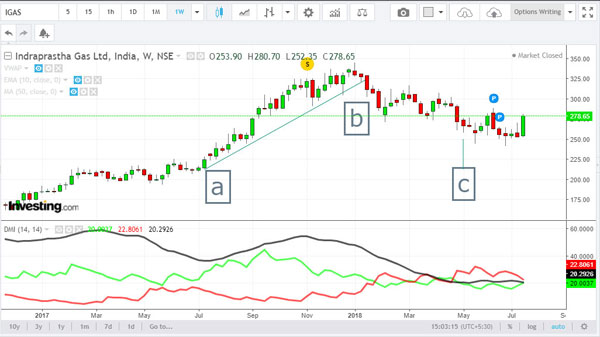
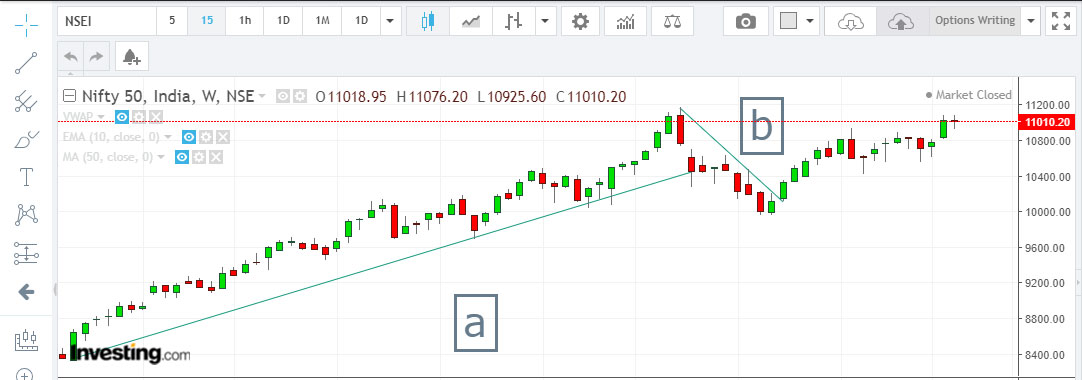

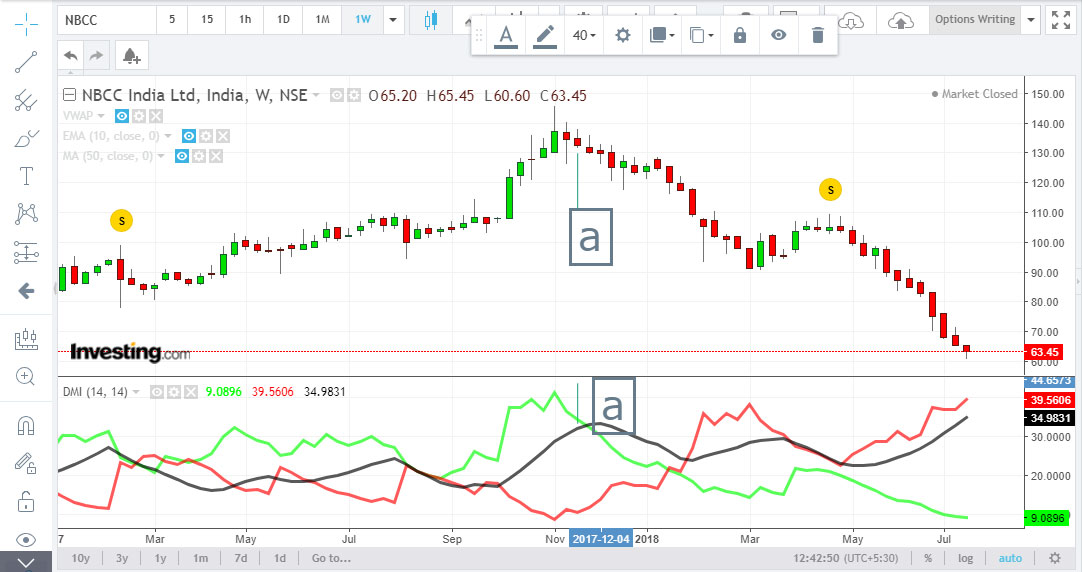

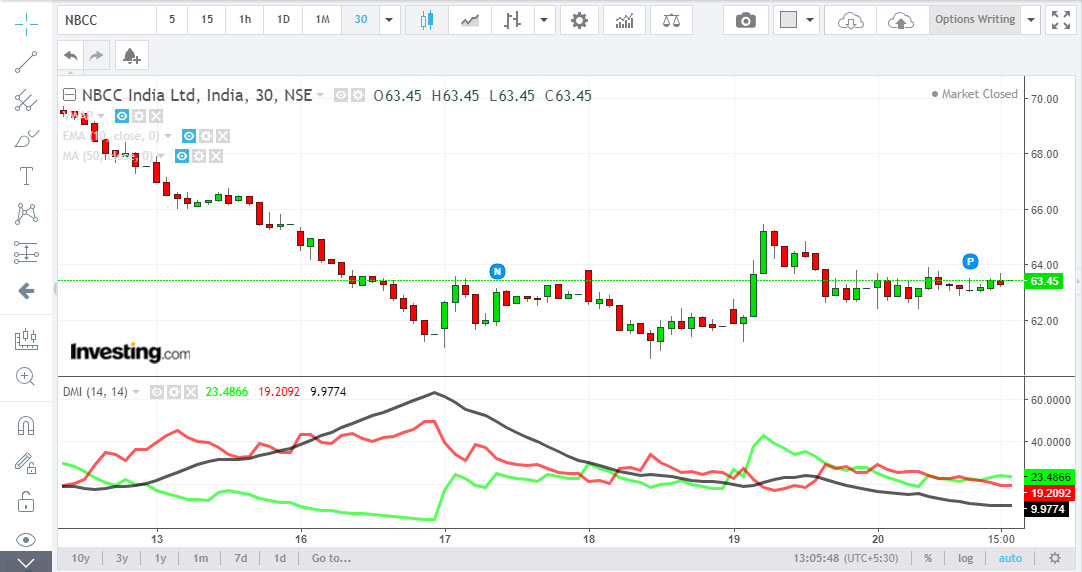
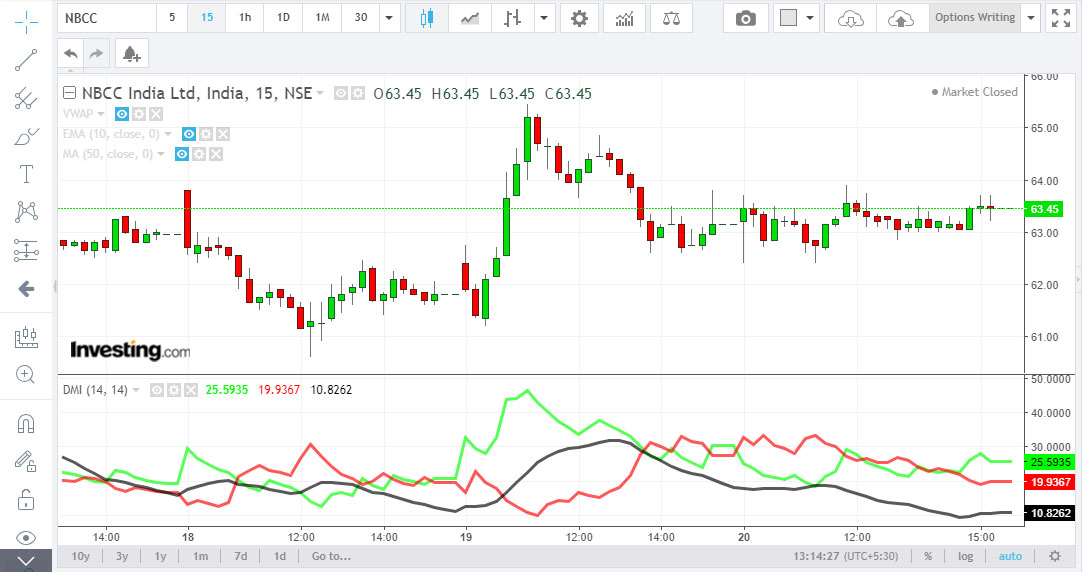


This setup is more useful than the previous intraday setup for retail traders like me, as 15min setup good for scalping which i am not comfortable. Thanks for making great effort in educating, appreciate ur selfless service.
sir pls post link for this scanner
Really helpful.many many thanks for your selfless services for us.
For intraday which time frame is ideal..Regards
For intraday which time frame is ideal..Regards
5M, 15m, 30M, .. DEPENDING N WHAT TYPE OF TRADER YOU ARE and how you read the charts
Sir the scanner’s setting you have posted here is for intraday or for weekly or 1 day setring to get know the trend ?
It is mentioned on the charts and in the article. Please read again.
Very nice & useful. for new learner .many thanks for your educating & selfless effort for us
Regards.
Extraordinarily generous of you to educate retail investors with actual trading plans. Even books provide only the theory but not actionable plans. Hats off to you.
How at C3 the trend is positive as ADX is going down but DI+ is increasing. But ADX should also be going up, isn’t it.
Not necessarily. ADX is at around 15 and it started rising. Moreover trendline was broken.
The screen scanner above are non functional. Or AM i MAKING SOME MISTAKE?
That’s just a screen shot and not a screener. However, you can see that screenshot to replicate it on chartink.com